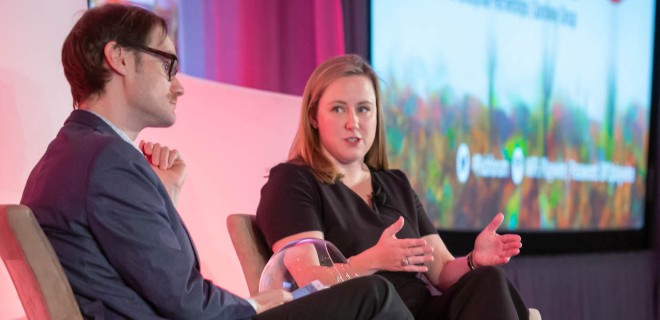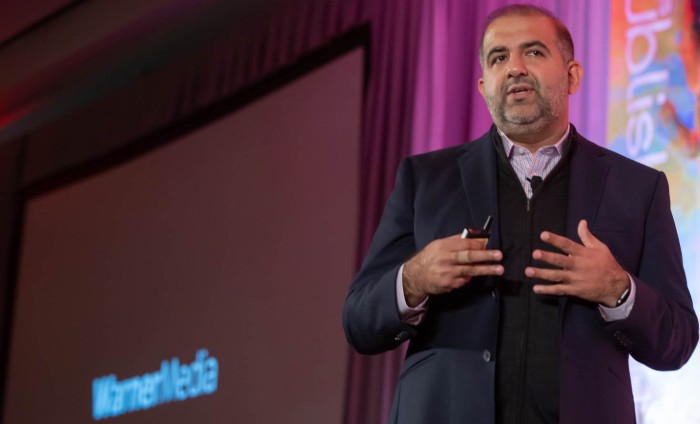
“People are not coming for my ads, they’re coming for your content.”—Amanda Martin, VP of Enterprise Partnerships, Goodway Group
On October 15, I celebrated one year as Senior Editor at AdMonsters. ? Publisher Forum Austin—November 4-17, 2018—was the first PubForum I ever attended. I’ve now come completely full circle with Publisher Forum Scottsdale—November 3-6, 2019 under my belt. Last year, in my tweet wrap-up after the Forum, I wrote about keynotes that introduced the concept of storytizing—a new marketing model, powered by search data, that takes earned and shared media into true consideration to better understand how audiences work and how we should reach them, as well as how augmented reality (AR) will provide a new layer of opportunity for advertising revenue with location as an enabler.
Beyond the specifics of what these keynotes were about was the underlying theme—publishers and advertisers should focus on people. This message rings true, again, a year later.
Sure, there have been changes over the year too. Last year GDPR was a big focus, while this year the privacy conversation leaned more toward CCPA. Last year, the future was about AR, AI, and doing more with mobile location data. This year the future was more immediate, centering on the unified first-price auction, the disappearing cookie and the move toward doing more with first-party data.
PubForum Scottsdale Day 1
In her keynote, Pubs and Agencies: Strange Bedfellows, Strategic Partners, Amanda Martin, VP of Enterprise Partnerships, Goodway Group talked about how Supply Path Optimization (SPO) provides an opportunity for publishers to have better relationships with agencies and advertisers. It’s an opportunity for both sides to work together to demand more from the SSPs and DSPs and get better aligned on inventory pathways. “Let the pipes make the best decision where to go,” Martin said.
On the plus side, Publishers who advocate for SPO are better positioning themselves for buyers to more easily make their way to them. But without collaborating with buyers and agencies on cleaning up the path, there stands the risk of not getting the best bids for inventory. Collaboration is key to arriving at the best outcomes for both sides. “I understand managing yield,” Martin said, “the buy side needs to show you where the money is gonna go.”
As far as a cookieless future is concerned, Martin highlighted that a Unified ID was not an end-game solution but a clean-up solution. There’s an opportunity for publishers to lead the way here and get better about organizing first-party data. For now, most buyers are buying the way they’ve always bought. “It will take the third-party marketing crashing for things to change,” she said.
Martin also stressed that the shift toward content and context will need to be grounded in performance signals that look like the signals that worked for third-party. “Otherwise the performance metric will take a massive hit,” she said.
Similar sentiments were shared by Joetta Gobell, VP, Research & Insights, Dotdash. “Cookies are just a tool,” she shared, “We can’t let tools take priority over goals.” To better know their audience at Dotdash, they approach context targeting by broadening associations and looking at content consumption. “Target content, not individuals,” she said, “Build your own understanding of who comes to you and why to guide giving them what they need.”
These ideas around better collaboration in the industry, putting the consumer first, and a focus on content and context extended into day two as well.
PubForum Scottsdale Day 2
“With these newer services, the quality of consumer experience comes first—then monetization comes later.”-Amit Chaturvedi, EVP, Product and Revenue Operations, WarnerMedia
For his Tuesday keynote, Riders on the Storm: Leading Revenue Teams Through Monumental Shifts, Amit Chaturvedi, EVP, Revenue Operations and Product Management, WarnerMedia, focused on the shifting digital media landscape and how to navigate through change. In 2007, the iPhone changed everything.
For example, he noted that four years ago CNN only had to think about desktop, mobile web and mobile app and today there are 60 ways to consume CNN content, “There are unlimited distribution points for digital content,” he said. Much of this change is being driven by VOD.
The problem with these newer touchpoints is that the people building them are not proficient in how the ads work. “The people building these new channels, for them monetization comes last. They don’t care about data activation or how the ads are gonna work. People building OTT products don’t usually understand the plumbing underneath,” Chaturvedi said.
Amit Chaturvedi’s Five Endpoint Considerations
1/ Quality of the experience
2/ Ability to deliver ads in that experience
3/ Physical scale of that modality/endpoint
4/ Ability to use data for decisioning
5/ Ability to execute programmatically
To achieve success in this changing climate, WarnerMedia gutted and rebuilt their entire business process concentrating on the structure, culture and workflow. It was an entire organizational change from the top-down, bringing more clarity to roles and even changing leadership. This also included focusing on adding more training hours—7500 man-hours of training in the last 12 months. “In digital, we are able to deal with tech complexity and can be adaptable, but we suck at building our people,” Chaturvedi remarked.
Another element of remodeling the entire operation included cutting the tech stack by 50%, according to Chaturvedi. “Don’t worry about slimming the tech stack. Think more holistically with your solutions,” he said.
At the heart of managing this flurry of change in digital media is keeping a clear focus on the consumer. “If you’re a publisher, you want to create fans. Don’t abuse the privilege. They’re not users, they are fans. That’s what you invest your time and energy into—converting users into fans,” Chaturvedi explained.
